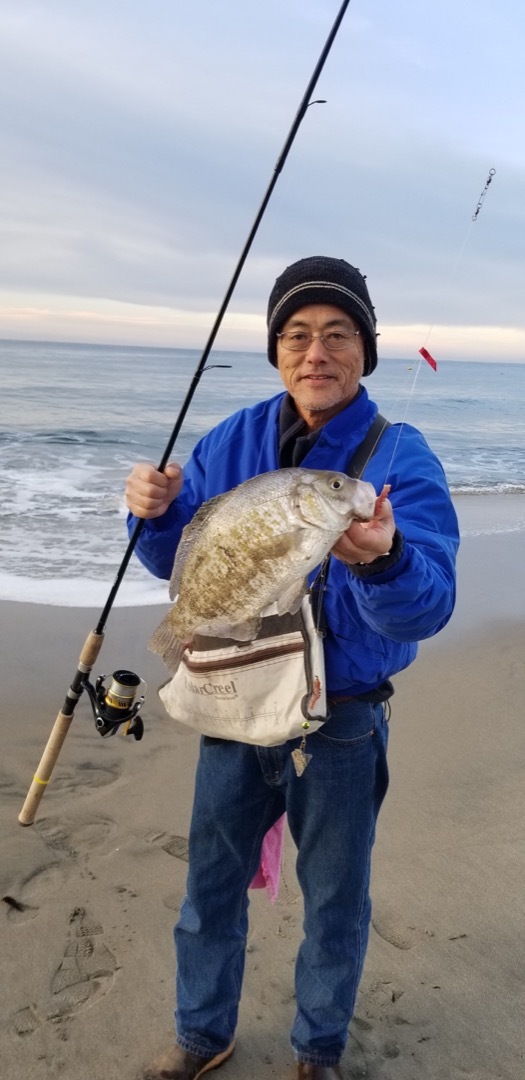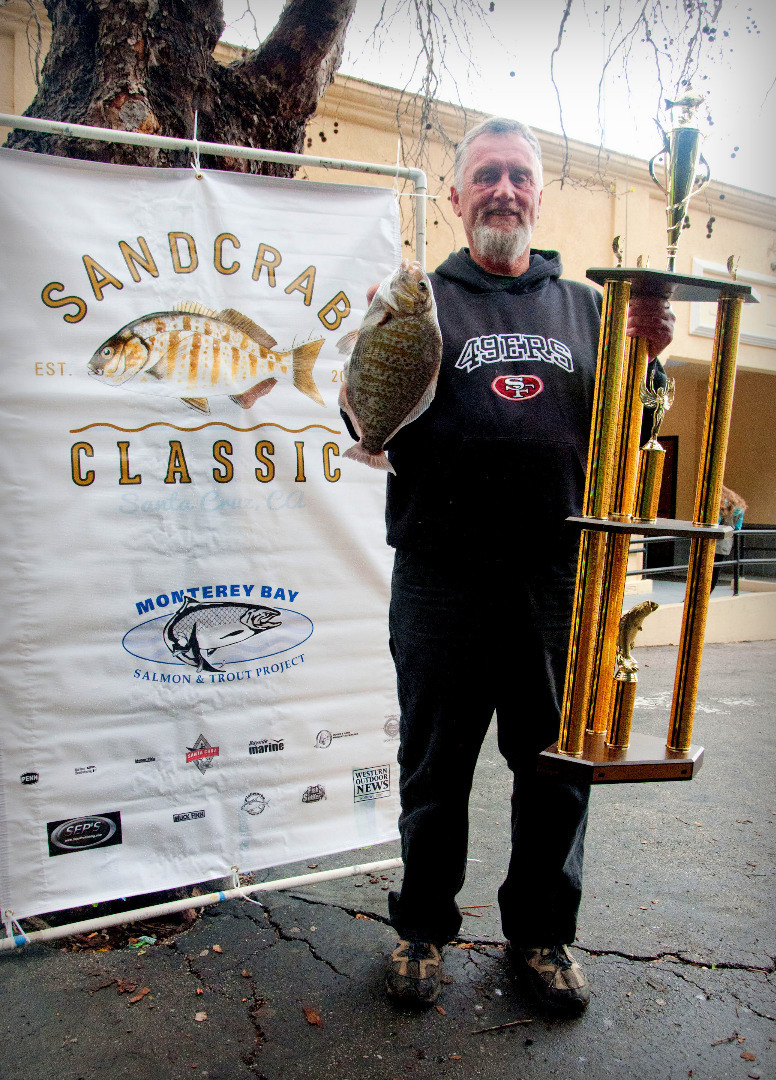Fish Report for 2-4-2022
Tips to find success reeling in surfperch

by Allen Bushnell
2-4-2022
Website
For a morning or afternoon jaunt locally, the beaches are producing increasing numbers of surf perch for Monterey Bay surfcasters. The fish seem to be on the move most days. A few experimental casts at two or three different beaches will likely locate some feeding fish. As usual, the beaches below Aptos and above Sand City are doing best for perch, though a good number have been reported caught near the Santa Cruz Harbor in the past few days.
Any of the beaches stretching from Santa Cruz down to Monterey can produce limits of barred surfperch on any given day. Fish move, and conditions such as tide, swell and water clarity can all affect the bite so the hot spot yesterday could be slow today. Be prepared to move to a different location if your first number of casts are not productive. If you are dedicated, you can find the surfperch almost every day. Target the deeper pockets of water just behind the surfline, and especially any visible rips or side-shore currents for best results. Surfcasters with the simplest equipment and approach can find quick success once the basics are dialed in. As with any fishing pursuit however, drilling down and repeated practice can reveal a self-sustaining complexity that grows ever deeper upon continued examination.
Most surfcasters prefer to fish for perch and striped bass when a high tide coincides with sunrise or sunset. High tide means deeper water pockets are closer to the beach. It’s these troughs and “holes” that most often attract feeding perch and roving striped bass. In the Monterey Bay area, we get wind almost every day. Early mornings can be very still, and sunset evenings often feature a gentling of the winds that have blown all afternoon. It is just an educated guess on our part, but the surf fish seem to be more active in lower light conditions. This means dusk and dawn of course, but also includes overcast, cloudy or foggy days. Remember, surfperch and even the large stripers are potential prey as well as being predators themselves. Lower light conditions decrease their visibility to other fish or mammals that want to eat them. We believe lower light can foster a more aggressive bite as well. If the food item for our target fish is only visible for a short length of time and with closer proximity, our target fish is more likely to strike quickly. For us as anglers, the result can be slam-bang hookups. Which, to quote Carl Spackler, “is nice.”
Surfcasters looking for the biggest perch may want to try concentrating on the closest trough to the beach. Just behind the shorebreak, there is often a gully of deeper water. Larger fish are likely to hunt in that food-rich environment because the larger fish are strong enough to handle the whitewater tumult and heavy currents. With kicked-up sand the visibility is lower, which can encourage the aggressive hits mentioned above. Using larger swimbaits, stickbaits or small shiny Kastmaster or Krok
< Previous Report Next Report >
< Previous Report Next Report >
More Reports

1-21-2022
Anglers who woke early and checked their internet or radios on Saturday morning January 15, 2022 were alarmed to learn...... Read More

1-14-2022
Nearly 20 years ago, I was fortunate enough to share hosting duties on a local fishing radio show here in...... Read More

Website Hosting and Design provided by TECK.net